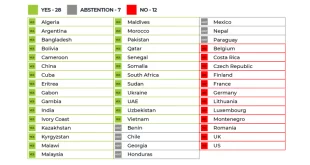All countries big and small are constantly striving to increase their share of participation in the global market. This has become an uphill task especially for developing countries that depend largely on the export economy. Despite their high ambitions and great efforts, the performance of these countries in the market place has been way short of expectations. Two major reasons can be identified for their poor performance. The first is the fact that developing economies simply do not have the saleable products (and services) that the export market needs. The second reason comprises the perennial impediments to free trade, such as unfair trade tariffs, subsidies and protectionism imposed by the competitors, usually the richer nations. These obstacles, which are normally of a political nature, cannot be readily removed. That said, in a way it is also not unreasonable for a country to defend its own interests first. But then global trade can turn ugly when politics tend to overlook legalities and moral issues, often to the detriment of the poorer partner.
A saleable product (or service) is one which has the right combination of quality and price, and of course availability is another important requirement. These are also the principal elements that contribute to the competitiveness of the product. Quality should be looked upon as fitness for purpose. It has to do with meeting all the expectations of the end user of the product, rather than just meeting customer specifications. A reliable indicator of quality often used by the marketing and sales function is customer satisfaction. It will be appreciated that eventually it is the end user who will have the final say on quality. Most manufacturers tend to overlook this point and become disappointed when certain products simply refuse to take off in the market place. It is good management to treat quality improvement as a continuous process, as it could lead to process and product development and eventually reduce production costs. Where possible, efforts must be made to transform semi industrialized commodities into value added products.
The product cost is determined largely by the efficiency of the total production process through the entire supply chain. There are several productivity measures available in the literature which can be used to evaluate process efficiency. Early published data (1980s) have highlighted that in the manufacturing industry, a key contributor to productivity is the technological content of the process, amounting to some 40 to 50%. Other factors that contribute to productivity are quality of labor (15%), capital (25%) and economy of scale, that is, high capacity plants (15%). The exact proportions may not of course apply to the present day context. Nevertheless, it is important to observe that process productivity is made up principally of technology and also of the education level of the work force. This applies not only to the manufacturing industry but also to the service sector. Interestingly, technology and education also happen to be two of the weakest points in developing economies.
.
Education here refers to the skill levels and academic standards necessary to build up creative man power in the country. Basic literacy skills perhaps contribute more to economic growth than pure academic education. The education system need not necessarily reach, at all costs, the level of excellence required to produce Nobel Prize winners. There are no readily available techniques to measure the creativity of a country. Some analysts tend to associate the creativity of a country to the number of Nobel Prize winners it has. On this basis, the USA, the UK and Germany may be named three of the most creative countries in the world. But surprisingly, their major competitors in the global market are countries such as Japan, China and South Korea, and lately also India and Brazil which have only relatively small numbers of Nobel Prize winners. This seems to suggest that academic excellence alone is not good enough to boost a country’s competitive edge in the market place. Another possible measure of creativity is perhaps the number of patents (plum patents) deposited in the country.
High technology is vital to improving the efficiency of a production process. Technology development cannot be achieved from one day to another. It is a consequence of continuous long term efforts aimed at developing the country’s innovative process in science and engineering. This calls for a strong Research and Development (R&D) function supported by a solid educational foundation. R &D must be the responsibility of both the private and public sector, and partnerships between these two sectors are often necessary to share know-how, funds and equipment. Funds for R & D are usually hard to come by. It is therefore often neglected or receives only low priority resulting in dramatic consequences to economic growth. R&D investments of industrialized countries amount to about 3 % of the GDP. Typical values for private enterprises may range from 0 to 1% of the total revenue.
It will be evident that efforts to improve the competitiveness of products and services in the global market will call for leadership, planning and vision. It cannot be done overnight, rather it is a long term process. An easy way out of course would be to artificially interfere with exchange rates by de-valuing the local currency. This would be well received by the export community. But then it should be remembered that the dynamics of an economy depends not only on exports but also on imports.
Post Disclaimer | Support Us
Support Us
The sailanmuslim.com web site entirely supported by individual donors and well wishers. If you regularly visit this site and wish to show your appreciation, or if you wish to see further development of sailanmuslim.com, please donate us
IMPORTANT : All content hosted on sailanmuslim.com is solely for non-commercial purposes and with the permission of original copyright holders. Any other use of the hosted content, such as for financial gain, requires express approval from the copyright owners.
 Sri lanka Muslims Web Portal Diversity and Inclusiveness
Sri lanka Muslims Web Portal Diversity and Inclusiveness



